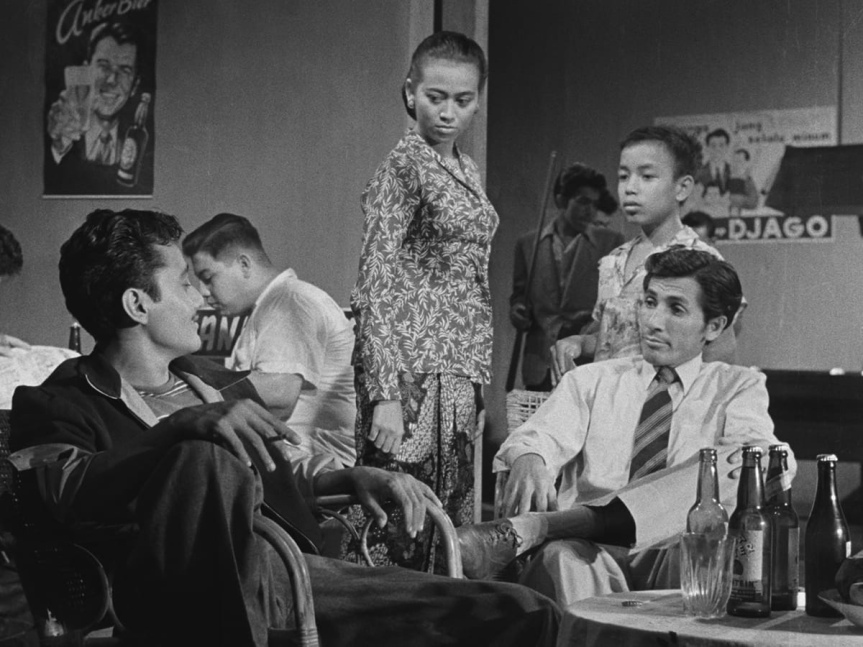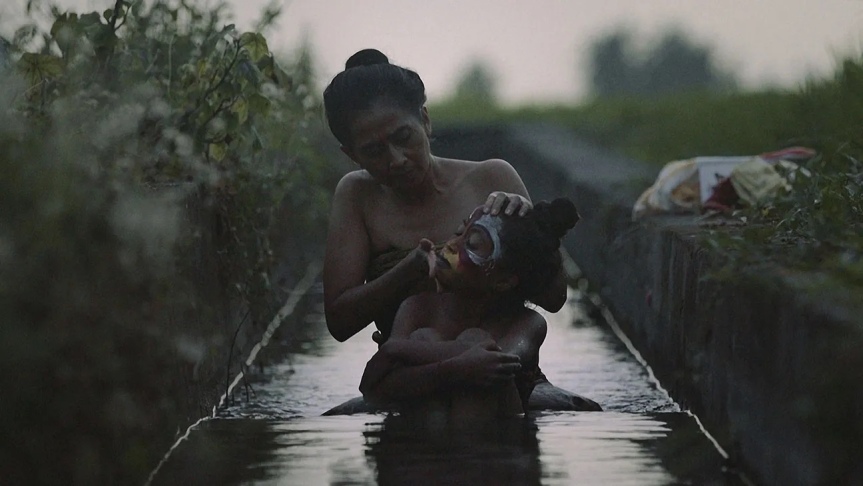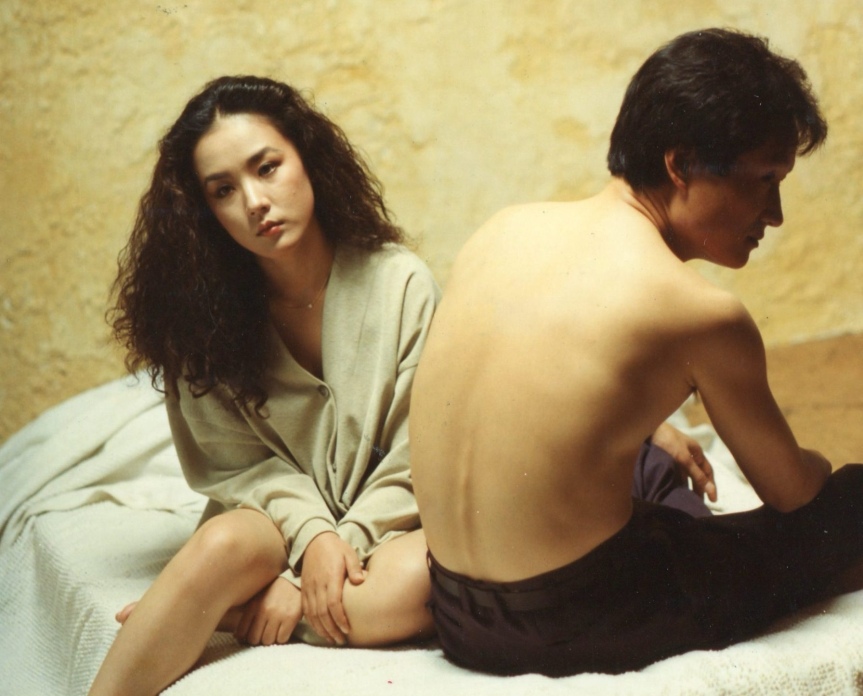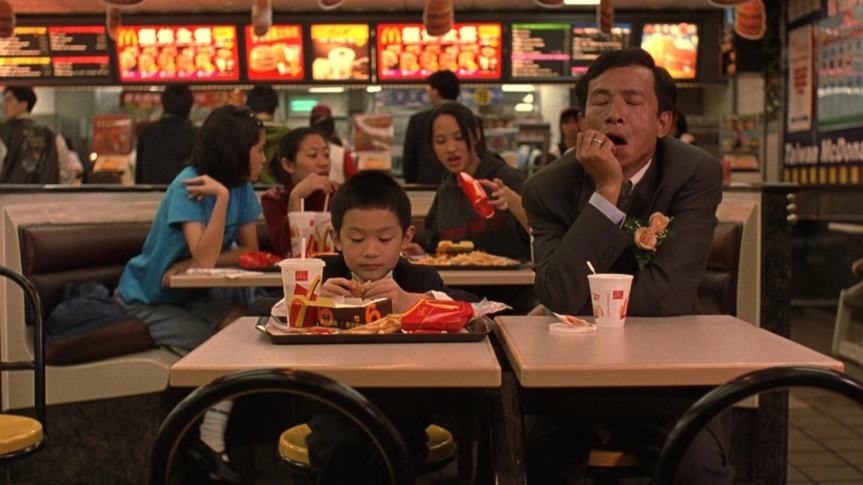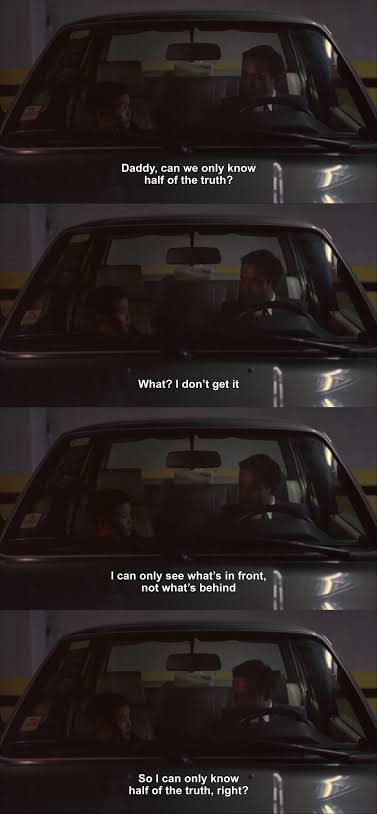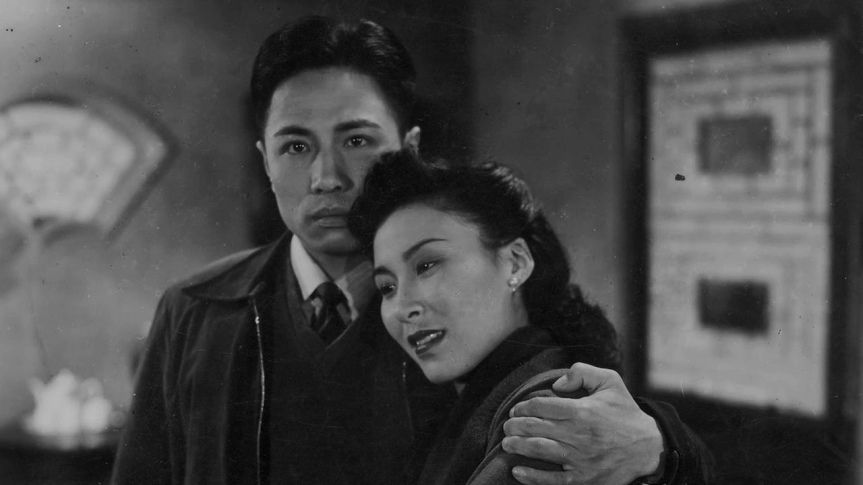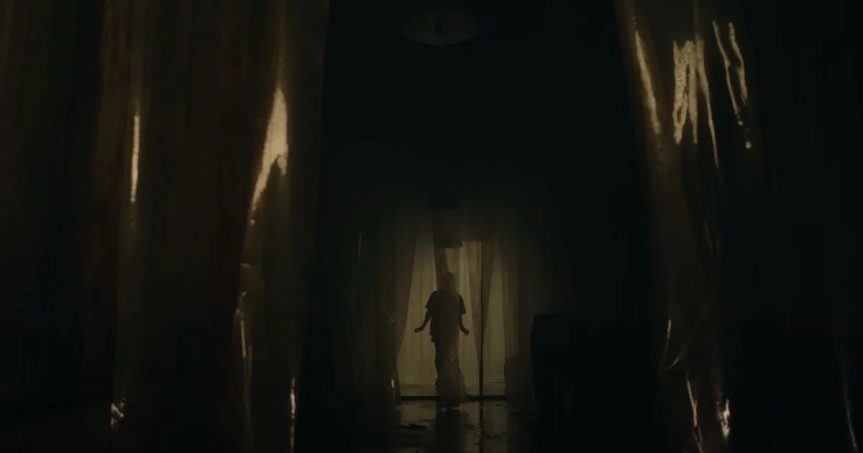The Big Continent: Asian Cinema Challenge
Week 5: Apichatpong Weerasethakul
For this week’s installment of The Big Continent: Asian Cinema Challenge, challengers are tasked to select, view, and critique films from the list of the films of Apichatpong Weerasethakul. I chose to revisit his film Tropical Malady (2004) which premiered 20 years ago at the Cannes Film Festival.
Cross-published in Desistfilm.
Returning to Apichatpong Weerasethakul’s (hereby referred to as Joe) Tropical Malady (2004) is akin to revisiting the ghostly materiality of jungle politics. For many Southeast Asians, particularly those residing in rural areas, the jungle symbolizes a realm where spirits and humans coexist, often serving as a cherished home. In this essay, I aim to delve into Tropical Malady, exploring the intricate interplay of the spiritual realm within Southeast Asia’s rural landscapes and the politically charged portrayal of the jungle as the region’s revolutionary frontier. Acting as both a mystical sanctuary of spirits and a political battleground, the jungle becomes a site of transformation and upheaval, where the oppressive forces of the State clash with rebels fighting for independence, among other nationalist, neocolonialist, anti-imperialist causes.
Jungle politics becomes a unifying thread across Southeast Asian nations. Tropical Malady occupies a significant position as a cinematic counterpoint in this political discourse. It can now be reexamined beyond its initial context two decades after its debut. Through this revisitation, I aim to reconstruct the ‘jungle’ as a geographical manifestation of radical hope, an intersection of spirituality and dissent.
In Tropical Malady, two narratological movements can be discerned. The first movement involves exaltation, a departure, or a moving-away-from, which constitutes the film’s beginning. Here, the narrative moves from rurality to the global city. The second movement returns to the contested terrain—the jungle— in retrospect (a looking-back) and as a reunion (coming together). By revisiting the jungle, the film suggests a path to absolution. As posited in this essay, this return to the jungle paves a new route to belonging, reinstating radical love to its rightful, contested place.
I. From Forest to the Global City: Exaltations

The film’s initial movement presents a rhetoric of exaltation between modernity and postmodernity. In the opening scene, a troop of soldiers discovers a deceased body in the field. Intrigued by the body, they proceed to take a photograph of the battalion and the corpse, leaving their intent ambiguous. However, within Southeast Asian discourse, the presence of soldiers in rural areas inherently signifies the state apparatus’ endeavor to surveil and control zones of resistance.
In this scene, the camera’s cinematographic intention is to create a comic effect. Through a sequence of handheld shots, the gathering of soldiers seems to be caught in media res. The soldiers display cheerfulness, laughing amongst themselves, while the face of the deceased is obscured, the body’s buttocks, exposed.

The camera meticulously captures the process of wrapping the body and preparing it for transport, followed by expansive long shots that portray the vastness of the region. Amidst the tranquil ambiance of yellow grass and earth, momentarily pervaded by peace, the troop’s movement disrupts the pastoral silence. As the troops traverse the plain, the camera advances with an eerie sense of fluidity, accompanied by the upbeat rhythm of Fashion Show’s track ‘Straight.’ The music’s pulsating beat injects a sense of ‘coolness,’ unsettling the film’s narrative by shifting it to contemporary Thailand. This sets the tone and contextualizes the film within the cultural landscape of the 2000s, reinforcing its connection to modernity.
The filmmaker’s cinematographic choice to move the camera forward, employing a push-in technique, reflects modernity’s attempt to disguise reality’s inherent straightforwardness. It’s crucial to observe his aural approach, as it remains significant throughout his body of work. His utilization of music and sound for world-building, for instance, the auditory elements in Memoria (2021) is an attempt to construct an ontological materiality that sutures the entire film. Tropical Malady‘s poetic examination of modernity contrapuntal to rurality stems from this dual expression: the camera’s forward motion and the introduction of extra-diegetic sound—a convergence of advancement (a moving-forward) and inclusion (coming-in), emblematic of modernity’s aestheticization of resistance.

This cinematographic technique of moving forward and coming in is interrupted by a second shot: a long shot that captures a field where the nude man traverses the landscape. Tropical Malady situates its visual politics within these insertions and disruptions, perceiving the globalized world as nonlinear, meaning the contemporary cannot be conveyed as colinear with modernity. The disruptive cut situates the film within the realm of postmodernity—a postmodernity, which is, according to the film, characterized by a bodily and aural apprehension of meaning. The field here demands to be perceived as a space of imminent political embodiment, yet it also complicates the inquiry: what defines bodies in specific locales? Tropical Malady’s opening shot introduces two types of bodies: the deceased body and the spiritual body. This duality renders Joe’s postmodernity as a conflicting realm of ethereal materiality. Moreover, the logic of capitalism aligns with similar assessments and indulgences: does not the global commodity market also solicit the fetishism of bodies, its ethereal materiality as manifest-being, operating on the dichotomy of dead labor and fetishistic phantasm, thereby endowing bodies with a spiritual dimension?

One might be tempted to entertain this speculative interpretation, assuming that Joe’s visual politics align with Thailand’s postmodernity or reflect a symptom of global postmodernity. However, Joe critiques such notions. In another scene, Joe toys with the symbolism of the soldier’s uniform. Through a series of playful juxtapositions, Joe alternates between portraying Tong (Sakda Kaewbuadee) as an ice factory worker and Tong as a soldier. This may bewilder the audience, particularly in the context of an art film. Later, Tong explains to Keng (Banlop Lomnoi) that he wears the uniform as a means of seeking employment, thereby expressing his socioeconomic status as a critique of postmodernity. Thailand’s burgeoning integration into the global market, evident in the years following 2004, fuels the relentless pursuit of capital accumulation, leading to a surplus of unemployed individuals—a manifestation of Marx’s concept of the reserve army of labor. Tong’s economic plight epitomizes postmodernity’s paradoxical combination of progression and regression. The film simultaneously articulates and disarticulates the essence of postmodernity, akin to a two-headed hydra.
Among Joe’s films, Tropical Malady stands out as the most overt in its portrayal of postmodern demise. Tong’s lack of education and unemployment, coupled with his manipulation of uniform signs, signal a breakdown in the traditional understanding of military symbolism. This dangerous trend sets a precedent for the potential exploitation of symbols associated with repressive regimes to assert economic control. It appears to foreshadow Thailand’s political trajectory towards military rule a decade later. The notion of using military insignia as a tool for personal empowerment seems absurd yet disturbing, as it elevates self-autonomy to the level of militaristic fetishism. Joe portrays Tong donning military attire as an example of postmodernity’s attempt to sanitize and glamorize violence through aestheticization—a familiar trope in Hollywood’s Marvel cinema, which sanitizes militarism as a form of visual spectacle. This approach, cloaked in the guise of aesthetic imperialism, has rendered military control, particularly of the carceral variety, conducive to both the commodification of sexuality and its suppression. Pornographic portrayals of military personnel engaging in same-sex activities epitomize the consequences of aestheticizing and sexualizing military symbols. Men in uniform become focal points for the deployment of sexuality and identity politics within the confines of postmodernity. Joe’s Tropical Malady should be taken as a cinematographic argument that complicates military insignia as a form of aesthetic deployment.
II. From the City to the Forest: The Spirit’s Path
Joe counters the aestheticization of militarism by offering an alternative narrative centered on the spiritual journey of queer love. Through Keng and Tong’s persistence to nurture their love amidst challenges, Joe dismantles the glamorization of militarism. It is worthwhile to examine the nuances of affection between the two in a series of scenes as follows:
- The Stare: During the troops’ initial visit to Tong’s family house, Keng gazes at Tong.
- Chance Encounters: Tong boards a public vehicle as Keng’s military vehicle passes by in traffic. Keng invites Tong to accompany him to his military base in Chiang Rai.
- Driving Lessons: Keng teaches Tong to drive, and rain leads them to seek shelter in an empty hut. On their journey back, Tong’s dog collapses on the road.
- Dog Hospital: Keng comforts Tong after learning that Tong’s dog has cancer.
- First Date: Keng takes Tong to a bar where Tong sings a song for Keng.
- At the Movies: Keng and Tong watch a movie together, with Keng playfully teasing Tong.
- The Love Note: Tong’s mother discovers Keng’s love note for Tong in his jacket
- Second Date: Keng and Tong rendezvous at an empty hut, only to be interrupted by a woman who urges them to visit a cave.
- Farewell: Keng escorts Tong home, and before parting ways, they exchange erotic gestures by licking each other’s hands. Keng leaves feeling content.
- Disjointed End: Tong vanishes, leaving Keng to search for him in vain upon returning to his room.
In this series of scenes, we trace the spirits’ journey from the forest to the city and back again – the second movement. Keng and Tong’s love story is characterized by a search for common ground, with Keng taking on the role of the pursuer, builder, and dominant figure, while Tong initially hesitates but eventually acquiesces, seemingly oblivious to Keng’s advances.
Throughout the scenes, Keng is depicted as temporarily freed from the constraints of military life, possibly on vacation and seizing the opportunity to pursue romantic connections with men. In this fleeting moment of liberation, queerness emerges as an alternative path. Keng’s defiance against societal expectations to conform to heterosexual norms imbues these tender moments with political significance. Tong’s submission serves as a dual affirmation, validating both the spiritual bond between them and their defiance of traditional relationship norms.
Joe masterfully portrays these queer dynamics in a cinematic manner, evoking a sense of lyricism and romance intertwined with conjecture. The pinnacle of this lyrical conjecture lies in Keng’s farewell to Tong, transcending into a realm of queer spirituality that prompts contemplation of Hegelian notions of immediacy and sense-certainty, rather than merely specters.


What does Hegel’s Spirit teach us in these tender moments? The Farewell scene comprises several shots. In the first shot, Tong drives the motorcycle with Keng as his passenger. Mobility here serves both as transportation and as a narrative device guiding them toward their union. The scene then cuts to Tong urinating; we only see his back while Keng waits on his motorcycle. When Tong returns, Keng immediately grabs his hand, first smelling it (Tong interjects that it is unwashed), then licking it.
In this moment, the sense-certainty of desire manifests itself almost as something bodily and immediate. It diverges from contemporary depictions of queer intimacy. This gestural rupture is almost pre-linguistic. The point of contact is a phallic symbol twice removed from the consanguinity of the body. First, it is not the penis itself. And secondly, it touched the phallus, and only through the phantasmal bridge of imagination can we reconstruct its original place.
However, in a Hegelian sense, the dialectics of homosexuality demand one to construct a logic of the world around a phallic absolute, twice removed from its immediacy. In this context, the hand serves as the mediator between the phallic absolute and the immediate body. To rationalize is to elevate the understanding of desiring production beyond this moment of euphoria.
The gesture of Keng licking Tong’s hand, which initially held the phallus, is reciprocated by Tong licking Keng’s hand. This affirmative act constitutes the suture of understanding. Reciprocity essentially leads viewers to rationalize the moment as sublime. The scene channels the notion of reciprocity as a means of stitching in.
And then, Fashion Show’s music ‘Straight’ resumes. Relieved, Keng rides his motorcycle around the city, with the nightscape unfolding before him. Passing through various moments, Keng continuously navigates between two temporalities. Eventually, we see Keng reunited with his platoon, still accompanied by the music as the spirits’ path converges and then diverges.




This adventurous detour leaves viewers with questions about the fate of the two lovers. In a way, Joe manages to fracture the narrative and turn it against itself, which proves most advantageous in the realm of art cinema. Here, elliptical narratives dominate the order by which stories are portrayed. Spaces between storytelling logics expand ways of being, producing a fragmentation of the story that creates room for queer politics to fester and foster. This leads us to the latter part of our analysis: the jungle as the revolutionary backdoor.
III. The Jungle as The Revolutionary Backdoor: Spirited Away
At last, we come to our last point – the climax and denouement of the story constituting the latter half of the film, which is often the most overlooked part of a two-part film. Most people regard the queer first half as the sufficient expression of Tropical Malady’s politics while disregarding the other half as an artistic experimentation, lacking ontological substance. However, this essay contends that the latter half constitutes Joe’s complete expression of the jungle as the backdoor for the revolution.
Let us begin with Marx’s inauguration about the specter of communism haunting Europe. In old Europe, communism has been relegated to the realm of the spectral by the Holy Trinity of powers. At this historical juncture, communism holds a dual potential: it is both incorporeal and always already a materialization of the proletarian revolution.
In Southeast Asian discourse, the ghostly materiality of communism in the jungles reflects modernity’s fear, and therefore demonization, of communism. Throughout history, communism has been treated merely as an idea, removed from its physicality. Whenever communism surfaces in public discourse, the state apparatus ensures it is marginalized and distanced from public opinion. Meta (Facebook) ensures that community pages by left-leaning groups are devoid of existence. The triumph of neoliberal capitalism is characterized by the suppression of communism as the most viable path forward.

In this context of entombment and haunting, we interpret Joe’s portrayal of the latter half of Tropical Malady as an orchestration of the jungle as a site of revolutionary politics. One thing remains evident: the military, represented by Keng, struggles to track and trap the jungle’s ghost. It is a spectral struggle, wherein the military endeavors to comprehend the transformations and evolutions of the ghost, only to find itself transformed in the process. This encapsulates the politics of revolution in the jungles: armed struggle is not merely a specter but also nominally a ghostly materiality, one that changes those who engage with it.
The jungle ghost eludes capture, morphing into something else whenever military force attempts to confront it. This demonstrates the impossibility of quelling armed resistance in the forest. Historically, Southeast Asia has witnessed many armed struggles that effectively use the jungle as a force itself. Myanmar’s Karen National Liberation Army, the Philippines’ New People’s Army, Vietnam’s Viet Cong, and Timor Leste’s freedom fighters for national independence, among many others, all used the jungle as a weapon against repressive and imperialist forces. The jungle in this sense constitutes a revolutionary backdoor, embodying Southeast Asia’s ongoing efforts to redefine itself and break free from its repressive past. Tropical Malady implores us to reconsider the transformative power of the jungle in reshaping the world anew.
###


